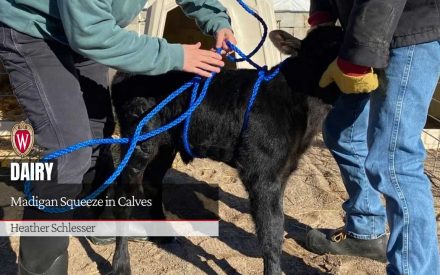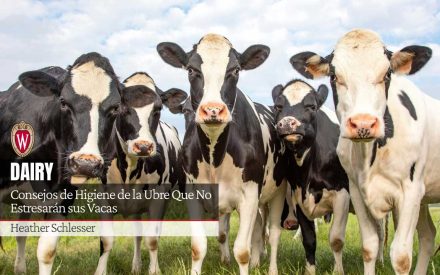While all the data points of information at our fingertips to monitor is a positive, there are still areas to improve when it comes to animal health and Automated Milking Systems (AMS), particularly for hoof health.
Including a properly managed footbath can improve lame cow numbers
A recent study called attention to the frequency of lameness in automated milking systems – an average of 25%. Lame cows have fewer visits to the robot, have reduced milk yields, and are at a 2x higher risk of being on the fetch list. Furthermore, only 70% of AMS herds offer access to a footbath and only 25% of the herds run the cows at the recommended frequency of four times per week. In addition, poorly managed footbaths may also increase foot health problems and the incidence of infectious claw lesions. Common reasons for footbath failure include poor design, weak chemical solutions, and inconsistent use.
The goal for AMS herds is to keep footbath use as a priority for animal health. When designing a new facility consider cows to be selected to pass through the footbath as they exit the robots, using a sorting gate that routes them to an alternative lane used only for those cows that need to be treated, while allowing the rest of the herd to exit through the main lane and return to the pen they came from. This layout is called the tollbooth design. Cows are directed down a rear exit lane, 41 inches wide, after milking, and from that lane, a two-way gate can sort them back to the pen or direct them through the footbath. With this layout, a single footbath can serve multiple robots. In a retrofit design, perhaps having the footbath at the end of the pen, where cows need to pass to get back to the resting area. Try to avoid putting footbaths on the cross-over alleys, as most cows will avoid it all together.
Considerations to properly manage a footbath in an Automated Milking Systems
Wherever the footbath is located, it is essential that there is a gate that can divert cows into or around the footbath, rather than walk cows through a bath of manure each day if it is not being filled. In addition, take into consideration cold climates and design the footbath with floor heating pipes so the area doesn’t freeze. Many AMS dairies are now installing automated footbaths that clean and refill once the designated number of cow passes is achieved. This is especially favorable to remove human error and time to perform this task.
According to the Dairyland Initiative, footbaths should be level, 10 feet in length, and 20 to 24 inches wide at the base so that the rear feet receive at least two immersions while walking through the bath. Additionally, the solution concentration should remain at its recommended percentage according to the product label and be maintained at the depth of four inches, so the dewclaws are submerged. No matter what chemical is used, it is important that the chemical transfer to the feet. Visit the University of Wisconsin School of Veterinary Medicine’s Dairyland Initiative website to find the Footbath Dose Calculator at https://bit.ly/3fpURiV.
We are facing times with thin margins and lameness is a costly disease that can be reduced by running well-maintained footbaths. Footbath passes can be accomplished without sacrificing cow flow by using the technology and gates to your benefit. Make footbath layout and location a priority when designing your facility. Simply run footbaths more to fetch cows less.

 ▶️ Watch: Confort y diseño de instalaciones en granjas lecheras
▶️ Watch: Confort y diseño de instalaciones en granjas lecheras Madigan Squeeze in Calves
Madigan Squeeze in Calves Consejos de Higiene de la Ubre Que No Estresarán sus Vacas
Consejos de Higiene de la Ubre Que No Estresarán sus Vacas ▶️ Watch: Generalidades de la podología bovina especializada
▶️ Watch: Generalidades de la podología bovina especializada


